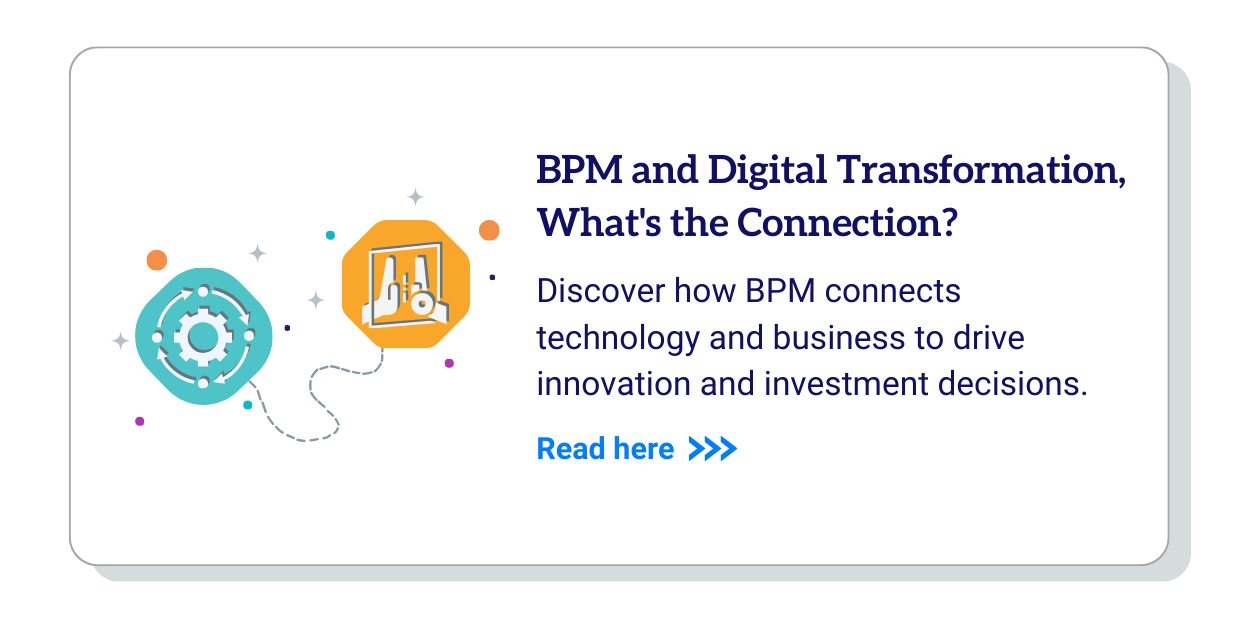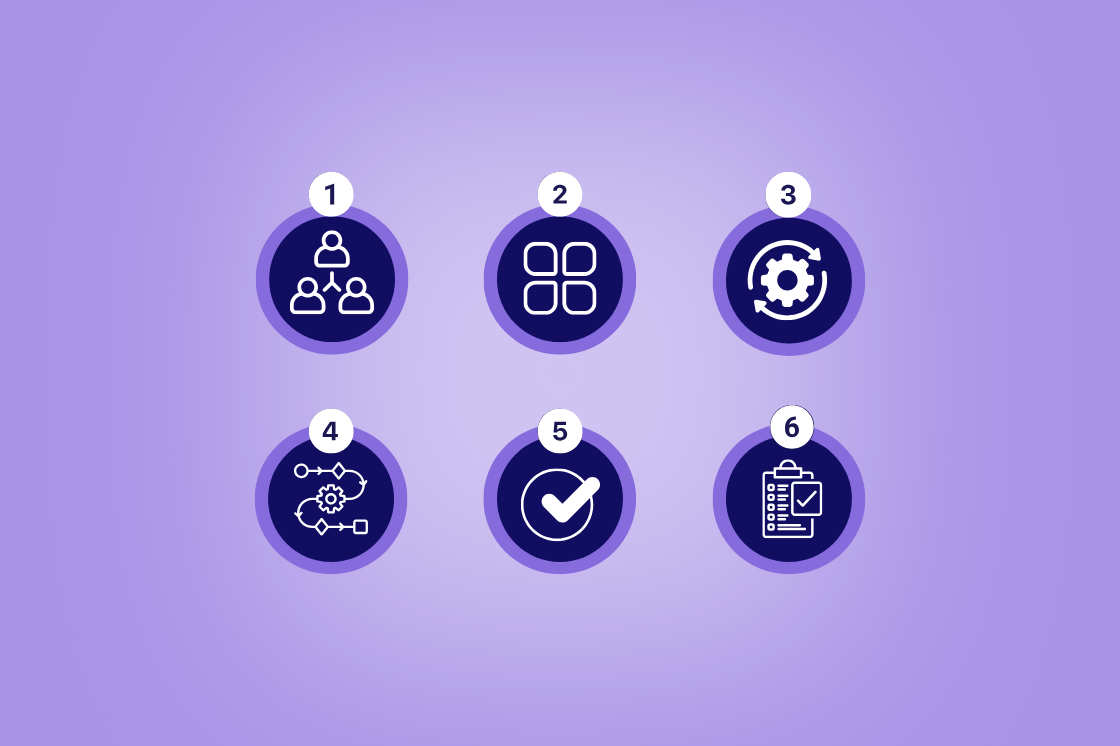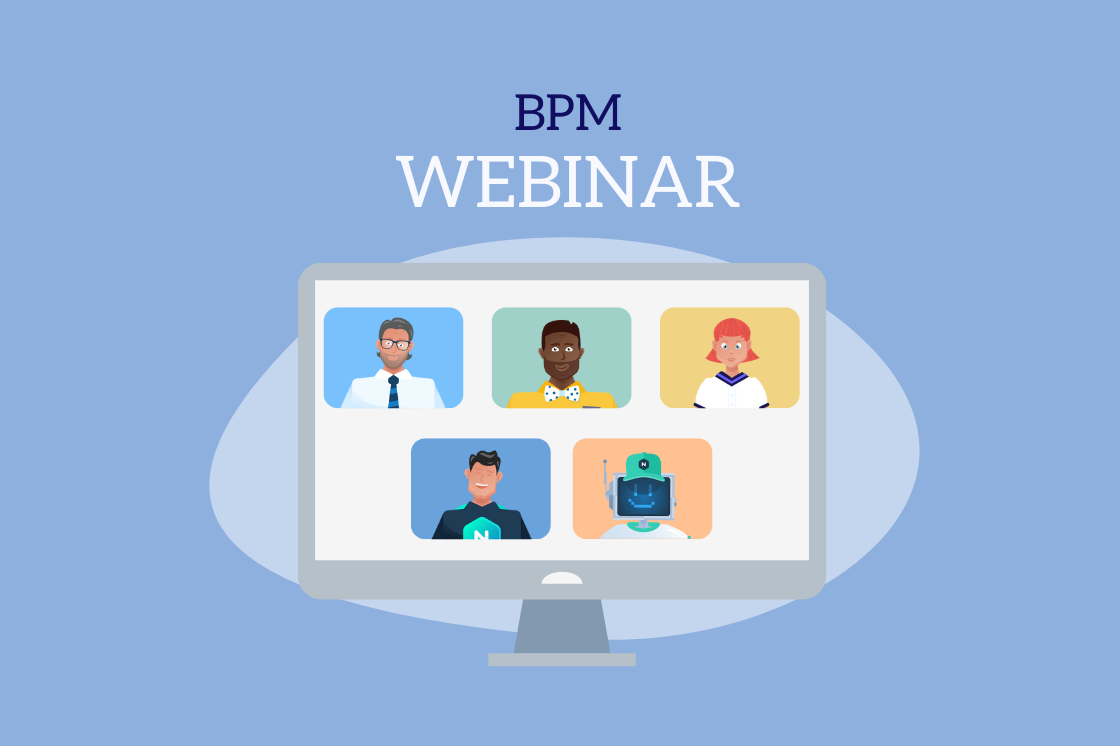What are the Benefits of Business Process Management?
Business Process Management (BPM) is a discipline focused on managing and optimizing an organization's business processes to improve its efficiency, effectiveness, and overall performance.
What is Business Process Management?
Let's start by defining Business Process Management (BPM) and then explore its benefits.
BPM is a methodology that improves business processes through a cycle of process identification, process mapping, process automation, process execution, process governance and continual process improvement.
Organizations can reduce costs, increase productivity, and improve customer satisfaction by implementing BPM.
The Six Core Elements of Business Process Management
Business Process Management is an ongoing process that requires regular attention and maintenance. The six core elements of Business Process Management are:
Process Discovery and Identification
The identification of, and categorization by business value, of the various processes within an organization. For more information, check out this article on understanding your processes through process discovery and identification..
Business Process Mapping
The creation of visual representations or diagrams of the processes to understand their flows, inputs, outputs, and dependencies. Learn more at An Introduction to Process Mapping.
Business Process Automation
The use of technology and software to automate repetitive tasks and streamline business processes, reducing manual effort and increasing efficiency. Check out our post on How Business Process Automation Increases Efficiency and Reduces Costs.
Business Process Execution
The carrying out a series of steps or actions to achieve a desired outcome. It involves coordinating resources, following established procedures, and monitoring progress to ensure successful completion of the process. Learn more at Business Process Execution: The Art of Managing Business Processes
Business Process Governance
The activity of aligning business processes with organizational goals and regulatory requirements through establishment and enforcement of policies, procedures, and controls. Check our this article on The Importance of Business Process Governance in your BPM program.
Continual Process Improvement
The ongoing refinement and improvement of processes based on feedback, data analysis, and changing business needs. Learn more at Business Process Execution: The Art of Managing Business Processes
Benefits of Business Process Management
The benefits of Business Process Management include cost efficiency, improved collaboration, retention of corporate knowledge, enhanced customer experience, improved agility, and accelerated digital transformation.
Let's take a look at each of these benefits in more detail.
Harnessing BPM for Cost Efficiency
There are several ways in which Business Process Management can improve the efficiency of an organization, resulting in lower costs.
Streamlining Processes: One of the primary benefits of BPM is that it allows organizations to identify bottlenecks and inefficiencies in their processes, which can be eliminated or re-engineered to improve performance and reduce costs. By optimizing processes and eliminating inefficiencies, organizations can reduce costs associated with waste, rework, and other forms of inefficiency
Process Automation: Process automation can save organizations significant money by reducing the need for manual labor and minimizing the likelihood of errors. By automating repetitive and time-consuming tasks, employees can focus on more high-value work that requires human expertise.
Improved Compliance: BPM can help organizations comply with regulations and standards, such as ISO 9001 or Sarbanes-Oxley, by providing a framework for documenting processes and ensuring they are followed consistently. Improved compliance helps organizations avoid costly penalties and reputational damage while ensuring they are delivering high-quality products and services to their customers.
Improving Collaboration With BPM
Implementing a Business process management program is a great way to improve collaboration across the organization. Here are just a few of the ways BPM improves collaboration.
Collaboration on Process Design: Processes should never be designed in isolation. It is crucial to identify and engage all critical stakeholders in the process. This way, you have a better chance of identifying everyone's issues and streamlining the processes. By involving cross-functional teams, the team members will be more empathetic towards each other's needs.
Common Process Repository: Poor performance is frequently caused by inadequate communication. Teams struggle to comprehend their roles and how to interact with each other and other teams due to a lack of well-defined and well-managed processes. An up-to-date repository of process documentation, along with process training, can significantly enhance communication and collaboration.
Employee Onboarding: An effective BPM program helps new employees collaborate better and become valuable team members. It provides process documentation, training availability, and effective process governance to keep newcomers on track.
Participation in process improvement: Process improvement participation can boost collaboration by fostering shared understanding, problem-solving, communication, trust, and respect among team members. Involving everyone in the effort increases investment and goal alignment.
Retaining Corporate Knowledge
According to a report by the U.S. Bureau of Labor Statistics, the aging of the corporate workforce is a significant trend. As these employees retire, they take away a significant amount of corporate knowledge. A Business Process Management program can mitigate this problem by capturing the corporate knowledge in the form of process and procedural documentation.
Enhancing Customer Experience with BPM
Business process management (BPM) can improve customer experience in a several ways.
By streamlining processes and eliminating inefficiencies, organizations can deliver products and services to their customers faster and more accurately. This enhancement improves customer satisfaction and reduces the likelihood of errors or delays that can damage customer relationships.
BPM can help organizations to better understand their customers and their needs by providing greater visibility into customer interactions and feedback. By tracking customer interactions and analyzing customer data, organizations can identify trends and patterns that can be used to improve products and services, and develop more targeted marketing campaigns.
BPM can help organizations to deliver a more personalized customer experience by enabling them to tailor their products and services to meet individual customers' unique needs and preferences. . By automating processes and using data analytics, organizations can gain insights into customer behavior and preferences and use this information to create more personalized experiences tailored to each customer's needs.
BPM can help organizations to respond to customer issues and complaints more quickly and effectively. By providing a centralized platform for communication and collaboration, BPM can enable customer service teams to work together to resolve issues and provide timely and practical solutions to customer problems. Increased efficiency improves customer satisfaction and loyalty, ultimately driving business growth and success.
Accelerating Digital Transformation with BPM
Digital transformation refers to integrating digital technologies into all aspects of an organization's operations, resulting in fundamental changes to how the organization operates and delivers value to its customers.
Processes are at the core of digital transformation!
The successful implementation of digital technologies starts with a thorough understanding of the company's business processes. Only then can opportunities for improvement be identified and an automation blueprint developed.
Bolstering Business Agility and Adaptability with BPM
Implementing a Business Process Management program is one of the best ways to increase business agility.
The continuous cycle of process identification, process mapping, process automation, process execution, process governance, and continual process improvement ensures your company's processes evolve and improve to meet changing needs.
BPM allows organizations to quickly identify issues and make necessary changes.
Implementing an effective Business Process Management program will lead to cost savings, improved customer satisfaction, increased operational efficiency, and better decision-making. 



